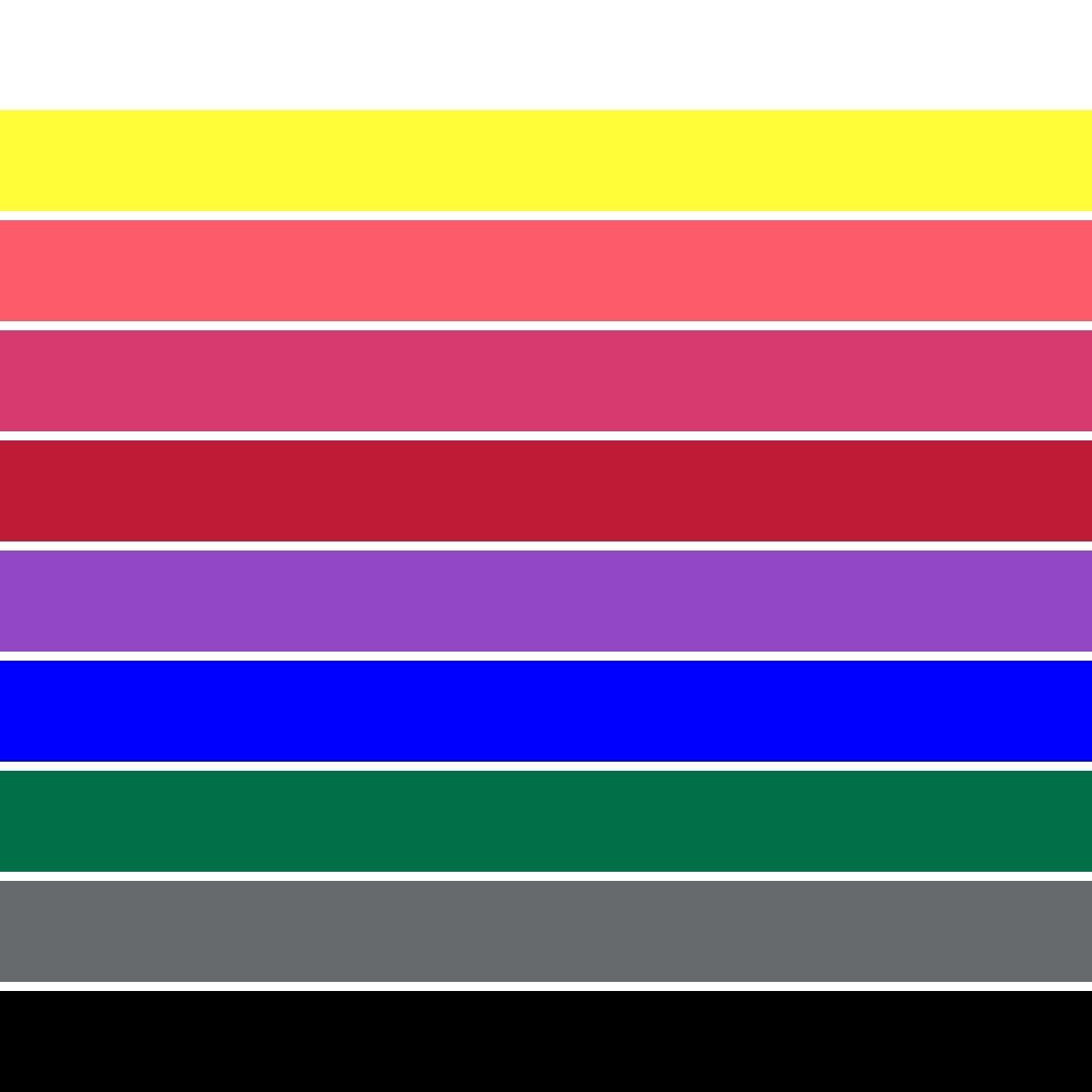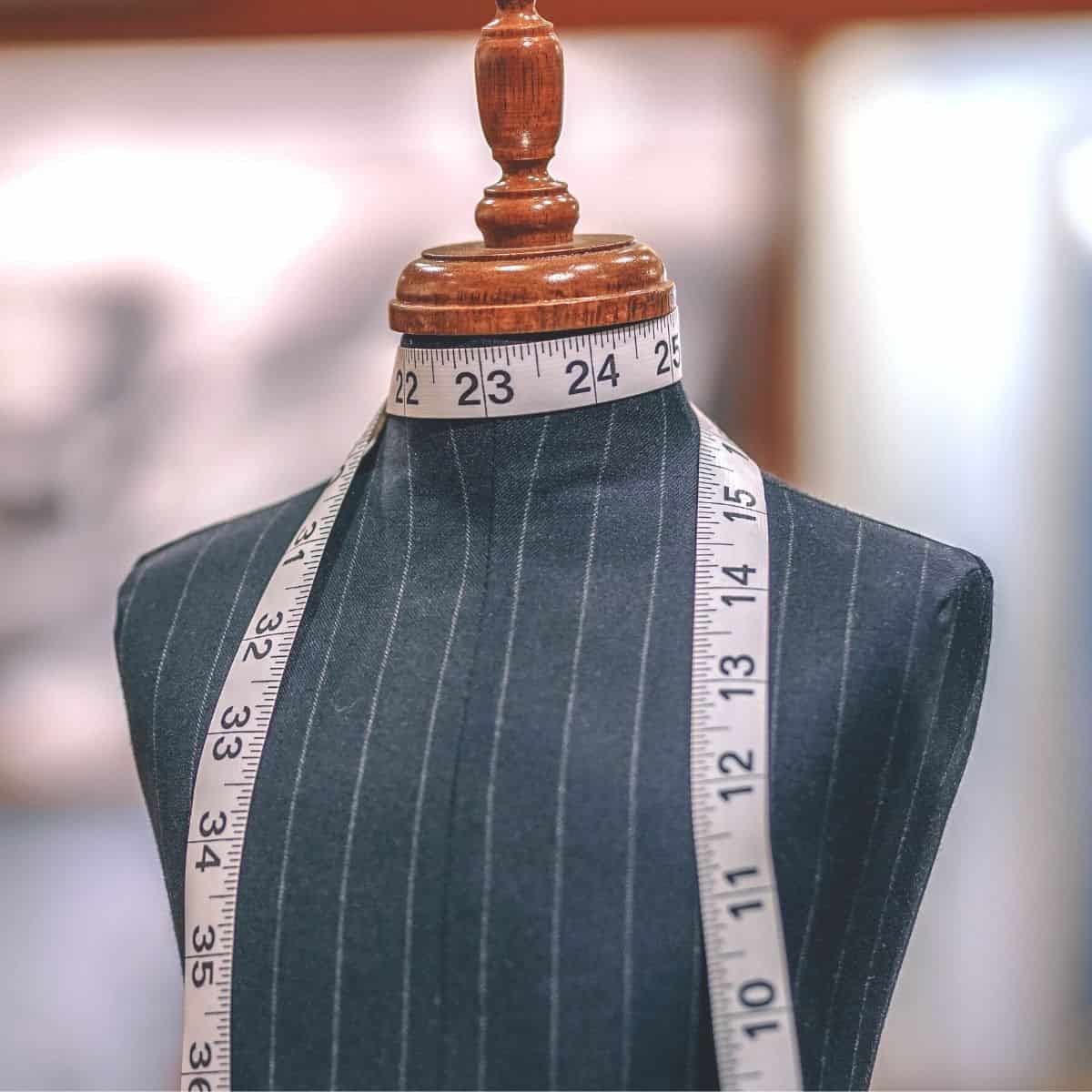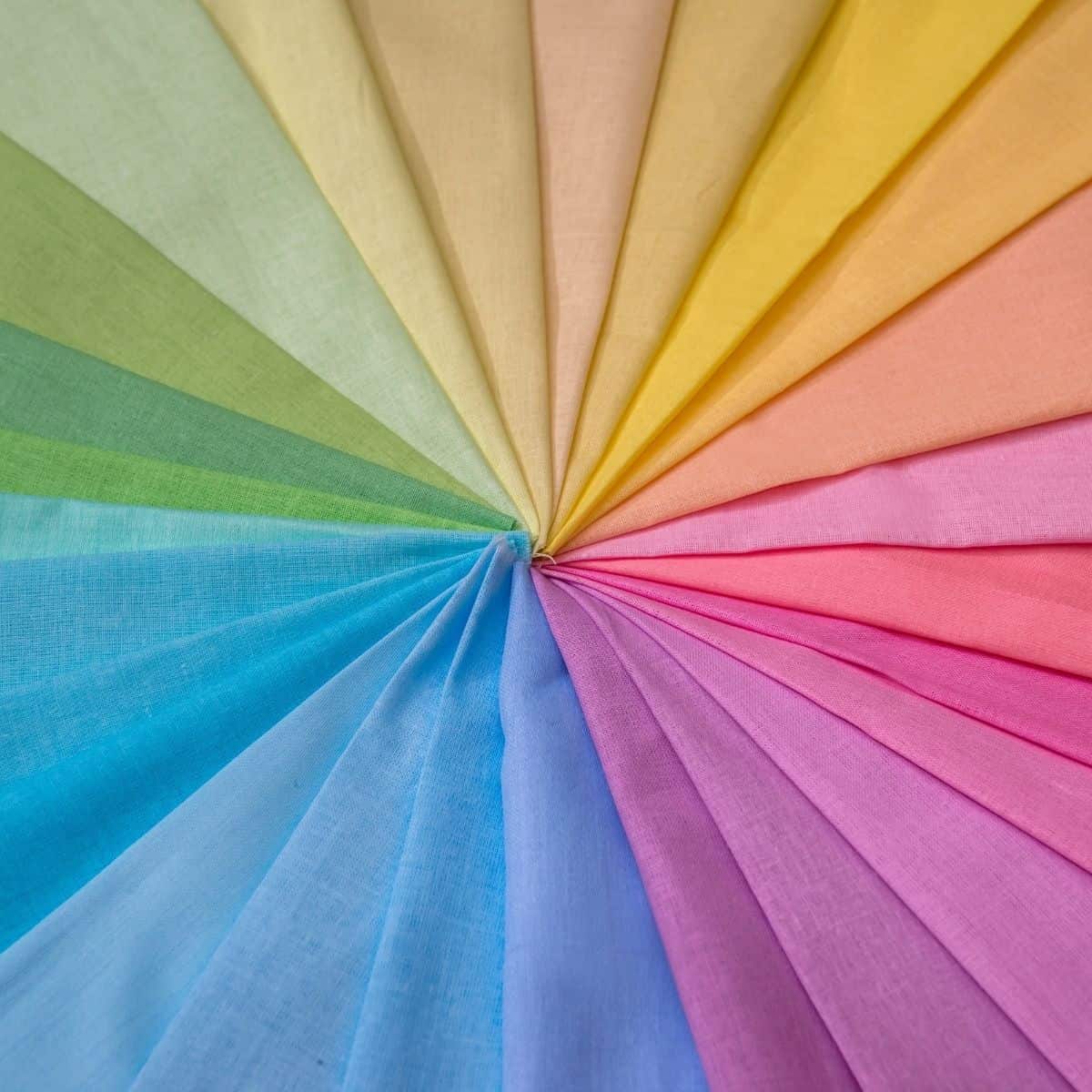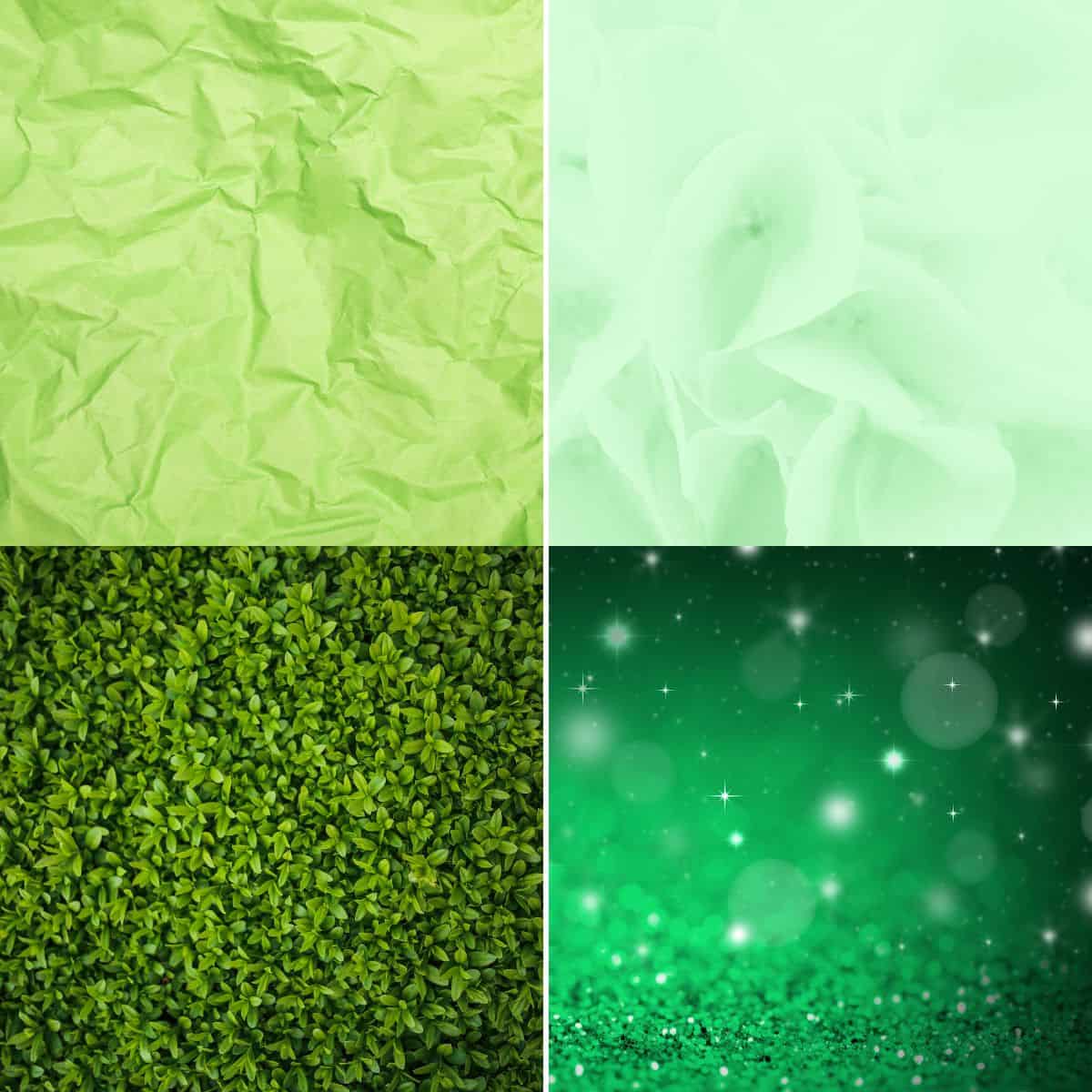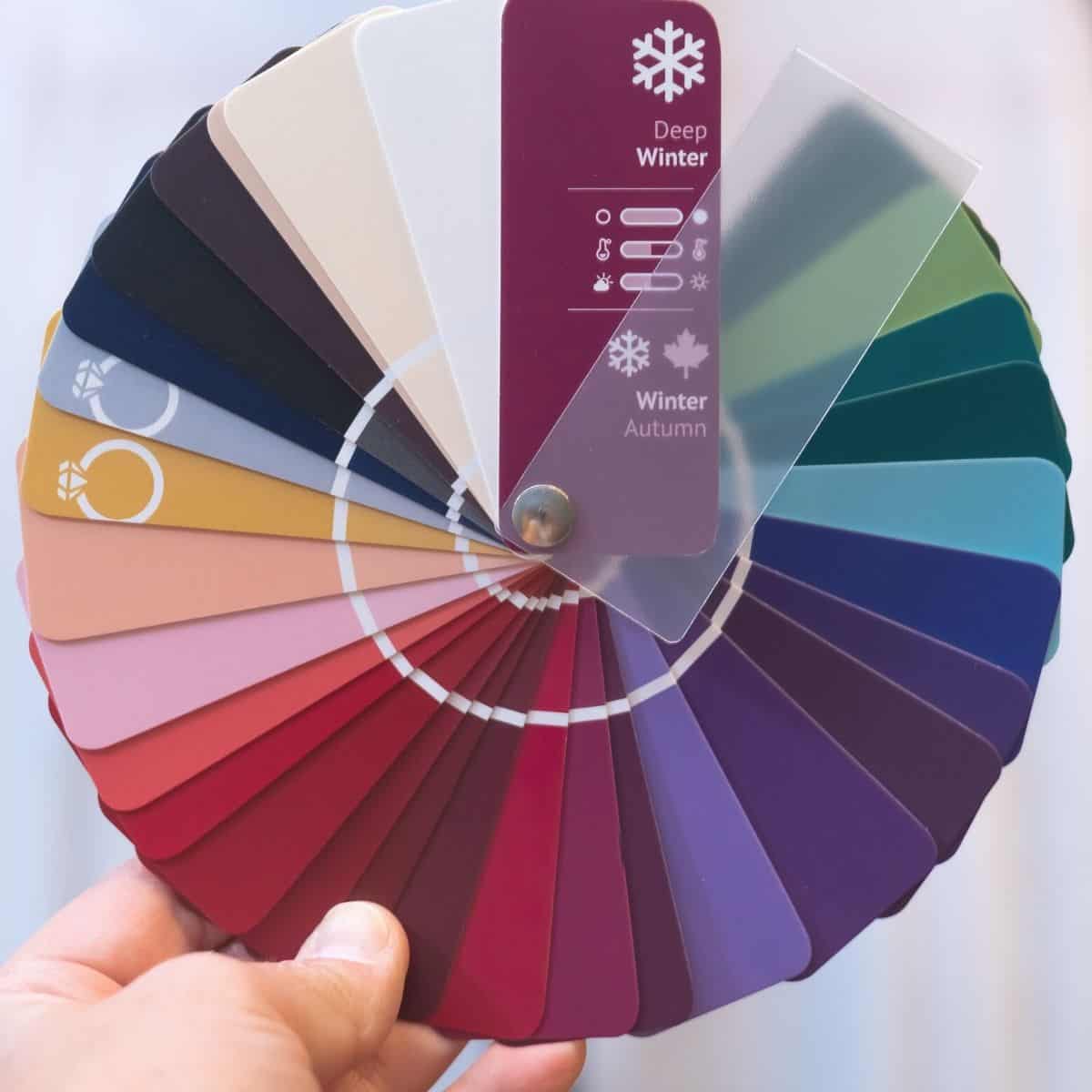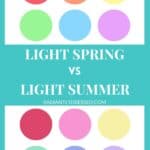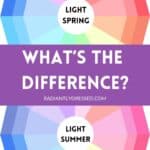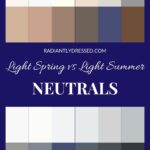Light Spring vs Light Summer: Discover the Difference between the Light Seasons
If you’re stuck between light spring and light summer, try these 4 tricks to determine your color season.
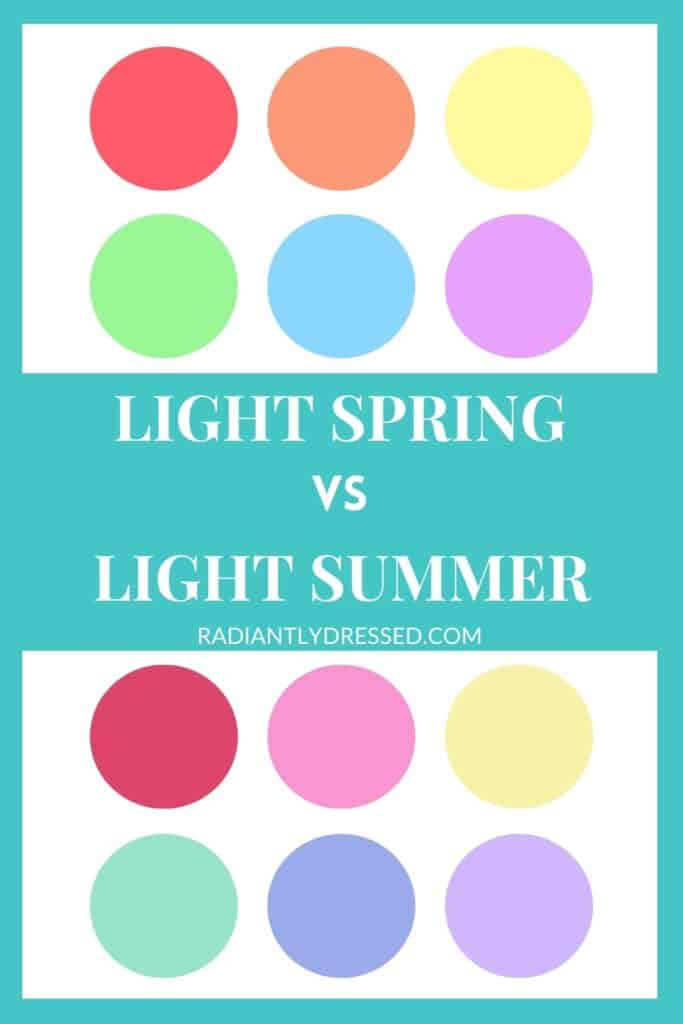
When exploring the intricate world of color analysis, terms such as “light spring” and “light summer” often surface. These categories refer to two of the twelve color seasons that professionals use to define the most harmonious color palettes for individuals based on their natural coloring. Understanding the nuances between light spring and light summer can empower you to select colors that enhance your appearance, highlighting your features and giving you a vibrant, healthy glow.
Light spring and light summer both fall at the lighter end of the color spectrum, sharing a soft and gentle quality that makes them somewhat similar at first glance. However, light spring carries a subtle warmth, a hint reminiscent of the first bloom of spring with its fresh, lively hues. In contrast, light summer leans towards a cooler palette, drawing on the tranquil and serene notes of an early summer’s morning.
The colors that suit you can be transformative, creating a look that resonates with your inherent coloring. Light spring’s palette typically includes soft peach, warm beige, and muted coral, bringing out the warmth in your skin. For light summer, you might find solace in cooler lavender, soft blues, and subtle gray-green, mirroring the coolness in your complexion. By distinguishing between these two palettes, you can curate a wardrobe that truly reflects and complements your personal coloring.
Table of Contents
Understanding Color Seasons
In the realm of seasonal color analysis, each season reflects a particular set of characteristics related to hue, value, and chroma that can harmonize with your natural coloring.
When you understand the differences between Light Spring and Light Summer, you can select colors that naturally enhance your appearance. This analysis assesses your skin tone, eye, and hair color to categorize you into a specific season. Each season is linked to a set of colors that harmonize with your natural coloration.
Light Spring characteristics include:
- Undertones: Warm to Neutral-Warm
- Hue: Primarily warm, fresh hues with some neutral
- Best Colors: Light peach, warm pink, coral
Light Summer traits are:
- Undertones: Neutral to cool
- Hue: Cool, serene colors, often pastel
- Best Colors: Pastel blue, soft lavender
By understanding your color season, you can enhance your wardrobe and makeup choices, ensuring that they flatter your natural coloring. Remember, the best hues for you are those that reflect your inherent tones, creating a harmonious and balanced look.
Characteristics of Light Spring
As you explore the Light Spring color palette, you’ll discover its warm and bright qualities that are both light and enlivening.
Color Palette of Light Spring
Your Light Spring palette is distinguished by a foundation of warmth with a delicate intensity. Colors in your palette are not only light but have an underlying warmth that gives them an inviting quality, ideal for a fresh and lively appearance.
- Primary Colors:
- Warm Blues: Turquoise, Teal
- Pinks: Flamingo, Coral
- Secondary Colors:
- Neutral Shades:
- Navy (look for warm undertones)
- Beige
- Ivory
Your Light Spring colors are ideal for creating harmonious looks that are vibrant without being overpowering, effectively capturing the essence of an early and sunny spring morning.
Characteristics of Light Summer
Light Summer is often distinguished by a palette that blends the coolness of Summer with subtle warmth. The colors resonate with a soft and delicate quality.
Color Palette of Light Summer
Your Light Summer color palette is inspired by the season’s soft, pastel hues, from the gentle lavenders of early blooms to the cool blues of a clear sky. Opt for a combination of the following colors to complement your season, enhancing your natural delicacy and grace.
- Primary Colors:
- Cool Pastels: Carnation, Lavender
- Blues: Robin’s Egg, Cornflower
- Secondary Colors:
- Greens: Seafoam, Pastel Green
- Pinks: Light Pink, Bubblegum
- Neutral Shades:
- Gray (serves as a cornerstone in your wardrobe)
- Navy
- Soft White (a blue based off white)
Remember, your best colors are soft and cool, reflecting the essence of a Light Summer’s delicate appearance.
How to Distinguish Light Spring vs Light Summer
Warm or Cool Undertone
The first aspect we’re exploring is undertones, and to a lesser extent, overtones. In the realms of Light Summer and Light Spring, one leans more towards cool, and the other towards warm. Light Summer is the cooler season, characterized by its soft, muted tones, while Light Spring is the warmer one, marked by its light, bright hues. Many people assume they’re neutral and struggle to choose between the two. However, the reality is, everyone’s undertones are either cool or warm.
It’s the overtones layered over these undertones that often cause confusion, making us think we’re cool when we’re actually warm, or vice versa. I’ve got a simple trick to help determine your undertones: the pinch test. Just pinch the end of your finger, as if you were about to give blood, and observe the color it turns. It’ll be a shade of red—either a cool plummy purple or a warm orangey coral.
Plummy purple indicates cool undertones, appropriate for Light Summer, while orangey coral suggests warm undertones, suitable for Light Spring. If you’re unsure, it’s safer to lean towards warm. Once you’ve identified your undertone, let’s briefly consider overtones. Light Summer individuals, with their cool undertones, often have a peach overtone. This mix of blue and peach gives a slight warm hue to the appearance, which can mislead you into thinking you are warm.
On the other hand, Light Spring people usually have a warm red undertone paired with a pink overtone, which is more common to Summer. Mixing red and pink can blur the line into pink vs coral, potentially misleading them to believe they’re cool because of their overtone, while their undertone remains warm. By applying this simple test and analysis, you can clarify your undertones, guiding you towards identifying whether you’re more aligned with Light Summer or Light Spring before we delve into further details.
Contrast and Intensity
The next concept crucial in distinguishing Light Summer from Light Spring revolves around chroma, also known as contrast or intensity. While both seasons share a light value and differ in hue—Light Summer leaning cool and Light Spring warm—their contrast levels also set them apart. Summer seasons are characterized by their softness, requiring low contrast and delicately muted colors. On the other hand, Spring is noted for its brighter, more vivid tones.
Light Spring and Light Summer find themselves in a unique position, navigating the delicate balance between their respective season’s brightness and softness.. For example, Clear Spring represents the brightest end of the Spring spectrum, and Soft Summer, the most muted within the Summer category. However, individuals within these seasons will inherently gravitate towards the chroma that best aligns with their season’s profile.
Light Summer individuals are suited to cooler, softer, and more subdued shades, whereas Light Spring requires hues that are brighter and clearer, often enhanced by a slight vibrancy to elevate the color saturation and intensity. Consider the color mint, which generally suits both seasons well. Reflect on your preference: do you lean towards a brighter, more punchy green version, or a softer, more subdued seafoam color?
Your inclination here is a direct indicator of where you fall on the chroma scale. If you’re drawn to the brighter and more intense hues, you’re aligning with Spring’s traits. If you prefer the gentler, less contrasting colors, you’re veering towards Summer’s characteristics. This distinction can help you understand whether your color needs are better met by the brighter, clearer palette of Light Spring or the softer, more muted approach of Light Summer.
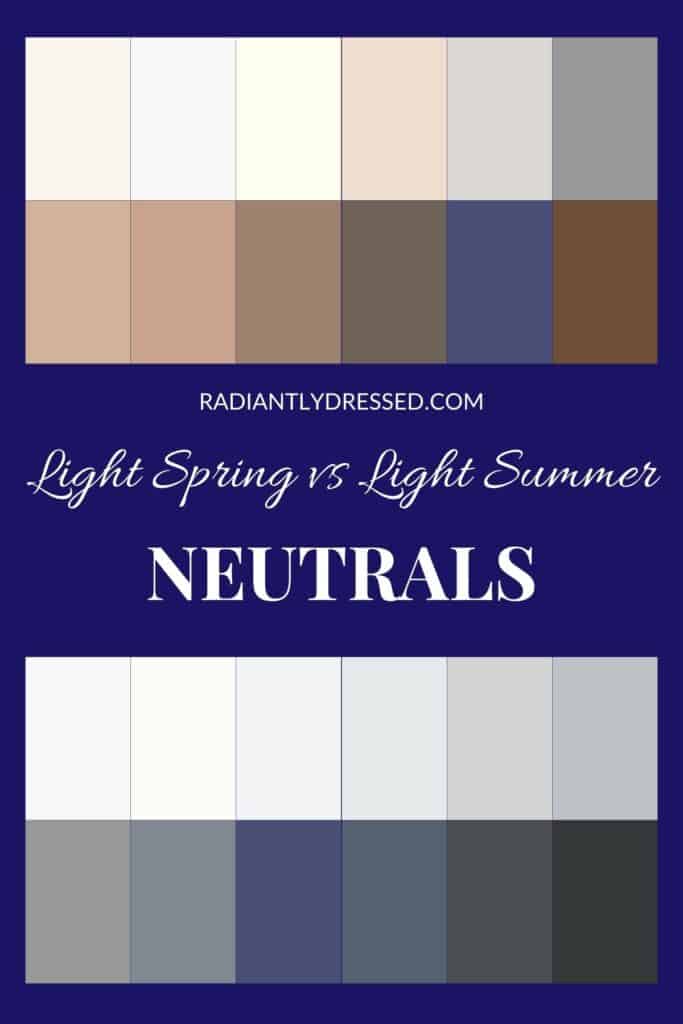
Spring and Summer Neutrals
When trying to determine if you’re a Light Spring or a Light Summer, a key factor to consider is how you interact with neutral colors. Light Spring individuals stand out as those who can effortlessly wear warmer shades of brown and beige. They thrive on the warmth these colors provide, often finding these hues enhance their natural vibrancy. Light Springs gravitate towards lively, warm navies and find that ivory, over optic white, suits their coloring beautifully.
Light Summers, on the other hand, excel with cooler, gray tones ranging from light to dark. They look their best in colors that are soft and muted, including soft white, which complements their delicate undertones without overwhelming them. For navy, Light Summers prefer a soft, gray-based navy that harmonizes with their cooler palette.
However, exploring the appeal of brown, beige, and gray neutrals can be an enlightening way to pinpoint whether you’re more aligned with the Light Spring or Light Summer season. Light Springs might find it challenging to pull off the cooler gray tones, which can make them look a bit washed out. So, if you find that gray shades don’t flatter you, you’re likely a Light Spring.
On the flip side, if the warmer browns and beiges tend to dull your complexion or clash with your cool undertones, then you’re probably a Light Summer. Understanding how neutrals work with your complexion is a practical approach to discerning whether you align more closely with the Light Spring or Light Summer season.
Color Test: Melon vs Carnation
The most effective method for distinguishing between Light Spring and Light Summer is what I like to call the melon-carnation test. These two colors are key in determining which season suits you better. If you find yourself unsure, I suggest finding fabrics in light melon (a light bright orange) and carnation (a light soft pink). Drape these fabrics around your face under natural light and take a photo using the back camera of your phone—avoid the selfie mode, as it can distort the results.
Observe the effects of each color on your appearance. For Light Summers, melon may introduce unwanted warmth to your skin or even give it a slightly off tone. It could highlight skin imperfections, deepen the appearance of wrinkles, and generally not flatter you. On the other hand, if you’re a Spring, carnation can be equally unflattering. It might make your skin look washed out, emphasize blemishes and imperfections more starkly, and make lines and wrinkles appear more pronounced.
This test is centered on understanding how specific colors interact with your skin tone. If you’re torn between identifying as a Light Spring or Light Summer, there’s no need to test with an array of fabrics. Using melon and carnation should efficiently reveal which season enhances your natural coloring, providing a clear direction in your color analysis journey.
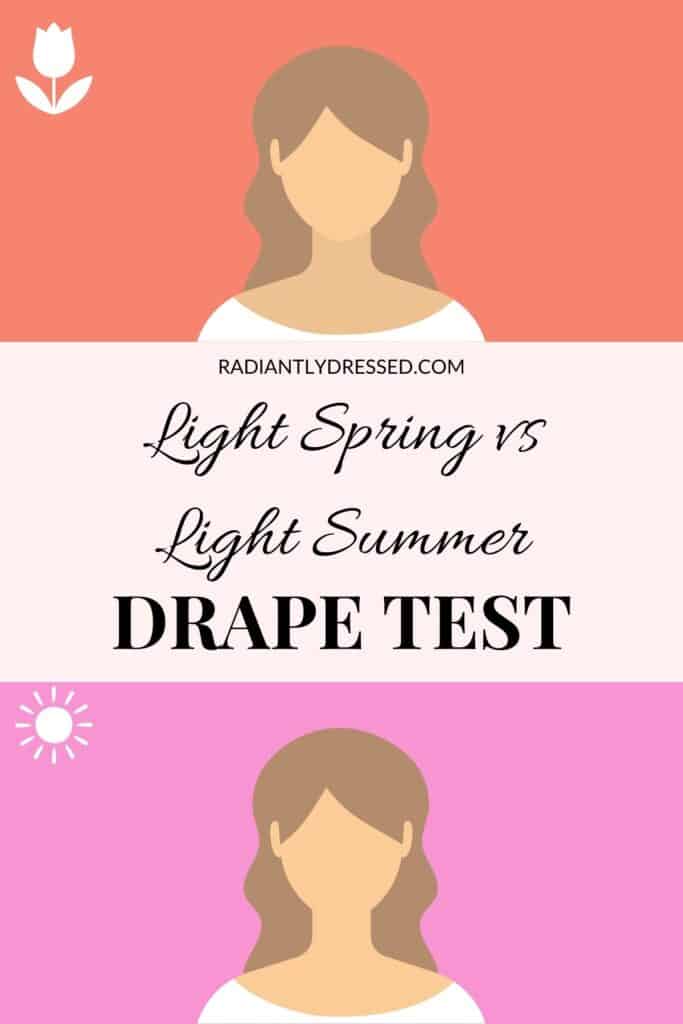
Determining Your Color Season
Finding your color season is all about matching your wardrobe and makeup to the natural colors of your hair, eyes, and skin. Knowing whether you’re a Light Spring or Light Summer can make a big difference, as each season has its own set of colors that work best with your natural looks.
DIY Color Analysis
To explore color season from the comfort of their home, my DIY Color Analysis Course is the perfect starting point. This course empowers you with the knowledge to:
- Utilize color theory to determine your color season.
- Use extra clues like personality and eye patterns to support your findings.
- Perform a step by step digital draping process to find your season.
- Create a wardrobe palette based on your best colors.
Transitioning to Professional Color Analysis
While the DIY course provides a solid foundation, transitioning to a professional color analysis can further refine your understanding of your color season.
A professional analysis offers:
- Expert Guidance: Benefit from an experienced eye that can discern subtleties in your coloring, leading to a more nuanced understanding of your season.
- Customized Palette Recommendations: Receive a personalized palette that includes detailed recommendations for clothing and makeup, ensuring every choice you make is in harmony with your natural beauty.
While there is a cost associated with professional color analysis, the investment is in yourself—yielding an individualized assessment that enhances your style, confidence, and the way you present yourself to the world.
Whether you begin with a DIY analysis or opt for a professional consultation, identifying your color season—Light Spring or Light Summer—is a key step in embracing your true self and highlighting your natural beauty through every outfit and makeup choice.
Tired of going round in circles trying to figure out your color season? Hack the same process used by professional color analysts to figure out your season from the comfort of your home, and stop feeling confused about color analysis with Personal Prism.
FAQ about the Light Seasons
How can I determine if I have a Light Spring or Light Summer color palette?
To determine whether you have a Light Spring or Light Summer color palette, evaluate your features for temperature and value. Light Spring individuals typically have a warm, golden undertone, while Light Summer is characterized by cooler, slightly muted undertones. Consider consulting a color analysis professional for a precise assessment.
What are the main differences between Light Spring and Light Summer fashion styles?
Light Spring fashion is infused with warm, bright, and clear colors that enhance a vibrant look, often steering towards hues like peach, coral, and warm yellows. In contrast, Light Summer styles lean towards cooler, softer, and slightly muted colors such as blues and cool pinks that complement a gentle and subtle appearance.
Can certain hair colors suggest whether someone is a Light Spring or Light Summer?
No, hair color isn’t really a factor in seasonal analysis. While it is more common to have cool hair for summer and warm hair for spring, color analysis primarily relies on the undertones of the skin for ultimate determination.
How do the Light Summer and Soft Summer palettes compare?
The Light Summer palette is characterized by light and cool tones with a touch of softness, without the muted look that defines the Soft Summer. Soft Summer, on the other hand, has a dustier and more subdued quality, with colors that are neither too cool nor too warm, but definitely softer and less saturated than those in Light Summer.
Why do some colors look good on me but don’t seem to fit my season?
Color compatibility can extend beyond the prescribed palettes of your season, reflecting the unique variances in individual complexions. It’s crucial to prioritize confidence and personal affinity for colors, sometimes even stepping outside your season’s guidelines to embrace what truly resonates with you.
Is it necessary to stick strictly to my color season’s palette?
While your color season offers a guide to optimize your natural beauty, personal style and expression hold value. Experimenting with and incorporating colors outside your designated palette is a personal choice that can add depth and personality to your wardrobe.
How does knowing my color season benefit me?
Recognizing your color season simplifies wardrobe decisions, ensuring that your clothing choices consistently flatter your natural appearance. This knowledge not only boosts confidence but also streamlines shopping, aiding in the creation of a cohesive and versatile wardrobe.
Can my color season change over time?
While your skin’s undertone and the foundation of your color season remain constant, factors such as changes in hair color, lifestyle shifts, or evolving personal preferences can influence how you engage with your color season, possibly leading you to adapt your palette accordingly.
Final Thoughts on Light Spring vs Light Summer
As we conclude our exploration of the gentle palettes of Light Spring and Light Summer, you’re now equipped with the essentials to determine your true color season. From analyzing your undertones to discern whether you lean cooler or warmer, to evaluating your personal contrast and intensity, and identifying the neutrals that best enhance your appearance, we’ve covered significant ground.
And let’s not overlook the melon-carnation test—your secret weapon in the quest to discover whether Light Spring’s warm brightness or Light Summer’s cool subtlety is your ideal match.
This journey aimed to clarify the distinctions that set Light Spring and Light Summer apart, despite their shared preference for lighter color spectrums. With this insight, I hope you’re now ready to confidently embrace your season. Whether it’s the vivid warmth of Light Spring or the muted coolness of Light Summer that resonates with you, step into your colors with confidence. Here’s to embracing your season’s palette with style and making every outfit a reflection of your color wisdom.
Related Color Analysis Articles
- Ultimate Guide to Color Analysis
- 3 Benefits of a Wardrobe Color Palette
- Universally Flattering Colors for Every Season
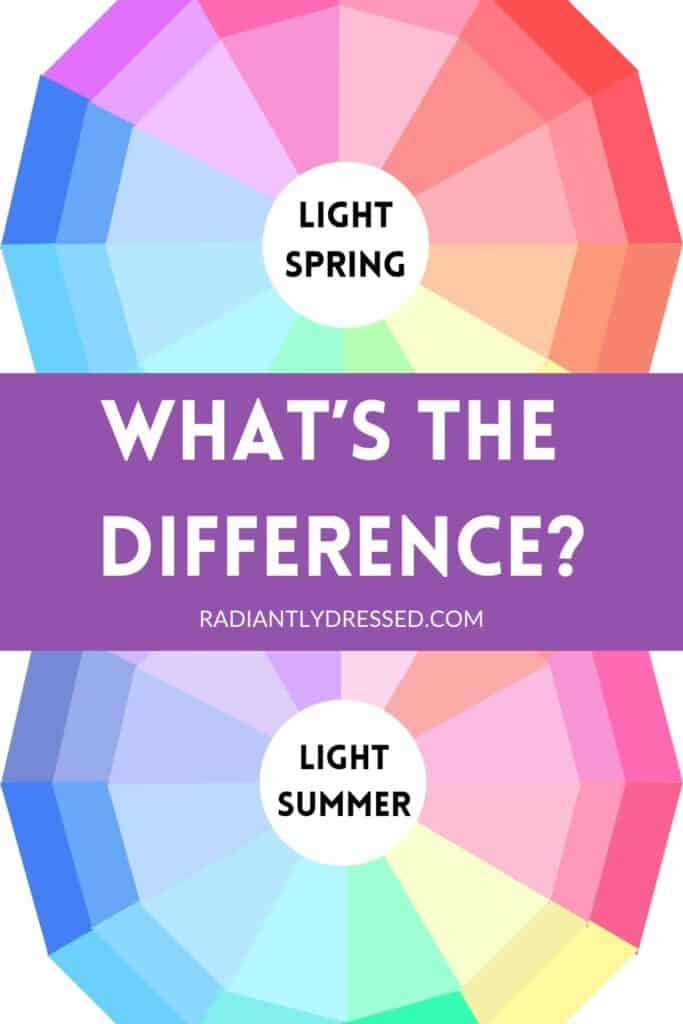
Exploring the subtle differences in your personal coloring is essential when comparing Light Spring vs Light Summer.
Stacey is the owner and creator behind Radiantly Dressed. She is a certified image consultant and AICI member focusing on creating simplicity in wardrobes via color and style.

